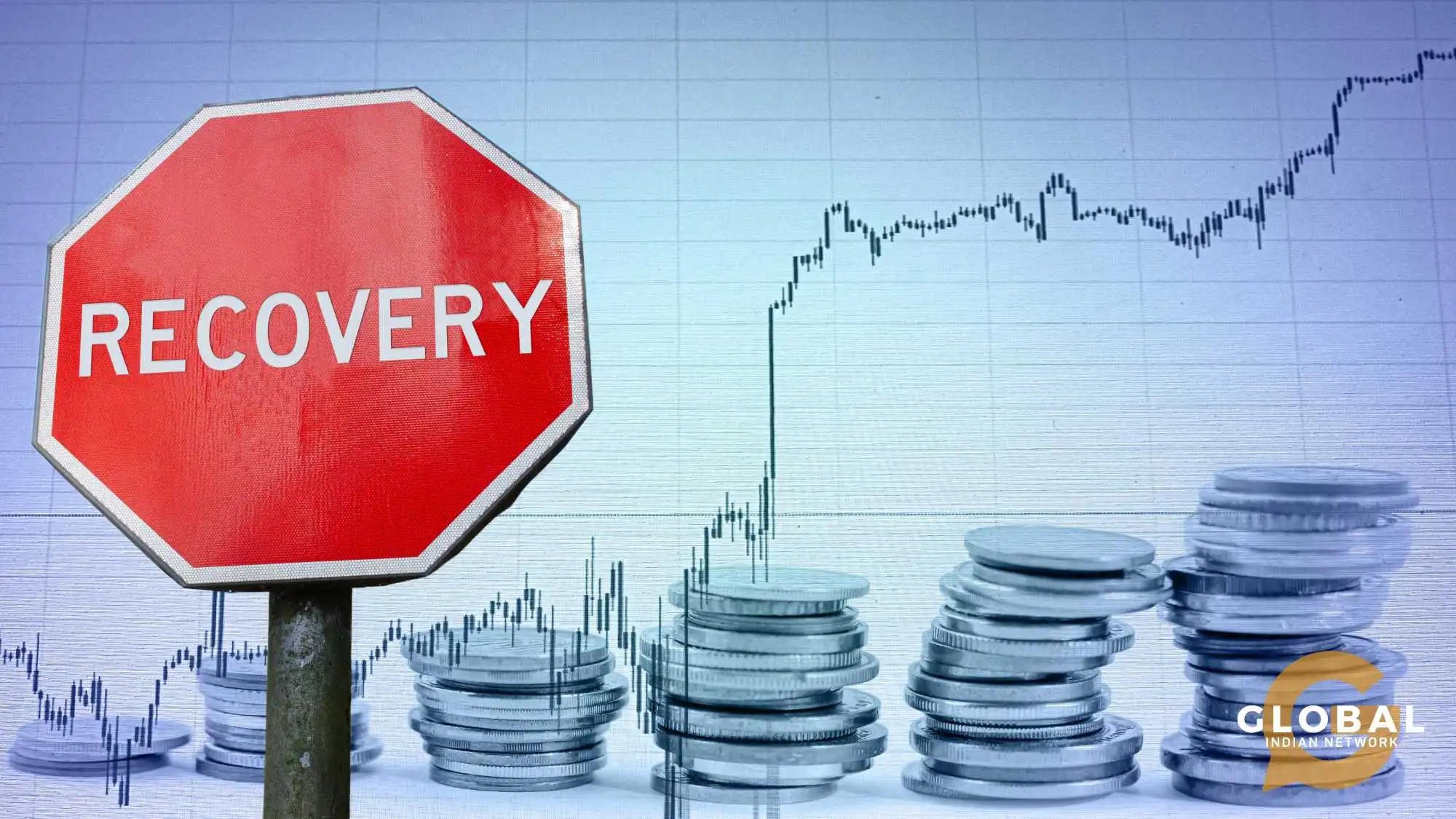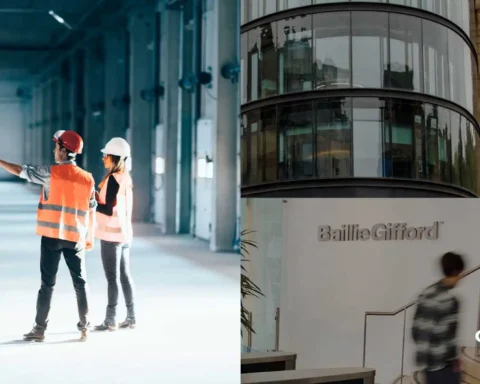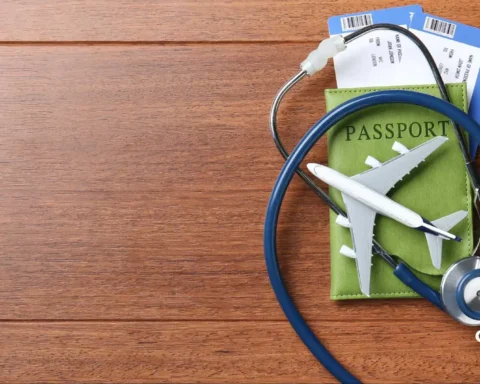The COVID-19 pandemic was a global health crisis caused by the novel coronavirus SARS-CoV-2. It was first identified in Wuhan, China, in November 2019. The virus, officially named Coronavirus Disease 2019 (COVID-19), rapidly spread worldwide, leading to widespread illness and significant socio-economic disruptions. Slovenia had been hard-hit and, in response, has been constructive and has taken action for long-term survival.
Firstly, let us clearly understand the context and challenges associated with post-COVID Slovenian economic recovery.
Listen To This Podcast: Is Slovenia the Emerging Logistics Goldmine in 2024? Insights from Natasa Pogacnik
Table of Contents
Context and Challenges
Slovenia’s economy entered a recession due to the pandemic, affecting private consumption, investments, exports, and tourism. The government responded with a significant fiscal package to preserve jobs and support firms, but structural reforms slowed due to the pandemic and political changes. The new government, in 2022, focused on addressing both the health and economic impacts of the pandemic. Slovenia’s diverse energy structure helps mitigate gas supply disruptions, but the country remains vulnerable to severe supply chain disruptions.
Key Factors Contributing to Post-COVID Slovenian Economic Recovery
Slovenian economic recovery has been driven by several key factors, contributing to the country’s impressive economic growth and record-high employment. Here are some of the main factors:
Exports and private consumption: Exports and private consumption (more details, further down) were the primary growth drivers, driven by supportive policies, rising incomes, and lower household savings rates.
Government support: A sizable fiscal package that the Slovenian government approved helped to protect jobs and business liquidity.
Structural reforms: With record-high employment, Slovenia had a robust post-pandemic recovery; however, the recovery has been hampered by rising energy prices, supply chain bottlenecks, and high inflation.
EU support: The European Union’s Recovery and Resilience Facility awarded more than €10 billion to promote a robust Slovenian economic recovery.
Near-shoring: Slovenia would gain from a potential acceleration of near-shoring since it might result in higher exports and investment.
Tourism rebound: A stronger-than-expected tourism rebound would also benefit Slovenian economic recovery.
Energy price declines: Slovenia’s economy could benefit from further reductions in energy prices, as the nation has been negatively impacted by the conflict in Ukraine and increased energy costs.
Slovenia’s recovery and resilience plan: Slovenian economic recovery intends to strengthen the resilience of the society and prepare it for the future, and has received the support of the European Commission.
Slovenia’s real GDP increased by over 8% in 2021, surpassing pre-pandemic levels. However, the country faces challenges like rising energy costs, congested supply chains, and high inflation. Continuously working to address these issues and maintaining Slovenian economic recovery has been nothing short of remarkable.
Structural Reforms
Slovenia is implementing several structural reforms to maintain its post-pandemic recovery. Some of these key reforms include:
Reining in inflation: Improvement steps for Slovenian economic recovery should prioritize controlling inflation before stepping up reforms to increase productivity and promote faster, more robust growth.
Healthcare system improvements: A structural reform focused on enhancing the effectiveness and caliber of the healthcare system raised the proportion of clean energy in all energy production and raised GDP.
Digitalisation: Slovenia is less digitally advanced than other European nations, which needs to change immediately. The government intends to invest significant money in enhancing the infrastructure for digitalisation.
Housing challenges: Despite being a highly pressing issue in Slovenia, the housing challenges mentioned in the National Recovery and Resilience Plan (RRP) should have been prioritised. In October 2023. The Council of the European Union approved the amendment to Slovenia’s RRP, indicating a green light for the updated national plan aimed at Slovenian economic recovery.
Sustainable mobility and circular economy: Slovenia intends to raise the percentage of clean energy produced and enhance sustainable mobility. To decarbonise the building, transportation, and energy sectors, these actions would be crucial.
Fiscal prudence: A sizable fiscal package approved by the government will help protect jobs and business liquidity.
Structural changes in Slovenian economic recovery aim to tackle rising energy costs, supply chain bottlenecks, and high inflation while preserving post-pandemic comeback. These changes can strengthen the economy and society, preparing it for the future.
Specific Structural Reforms
To combat inflation, Slovenia is putting particular structural changes into place. To increase productivity and promote faster, more sustainable growth, the nation is concentrating on containing inflation and moving forward with reforms. Slovenian economic recovery strategy plans to consolidate fiscal space through expenditure reforms and improved revenue administration. To control inflation, the country plans to reduce its labour tax wedge, which is higher than the OECD average. This aligns with global recommendations for a more equitable and effective tax system.
Slovenia’s Post-Pandemic Recovery: Impact on the Economy
Slovenian economic recovery has been strong, with a GDP growth of over 8% in 2021, surpassing the pre-pandemic level and euro area average. Exports, private consumption, favourable policies, rising incomes, and falling household savings rates drive the recovery.
Structural changes are being made to revenue administration and fiscal consolidation tax policy to combat inflation. Slovenia received over €10 billion from the EU’s Recovery and Resilience Facility, ensuring a faster recovery and a strong position for future growth and resilience.
Contribution of the European Parliament
The European Parliament has approved Slovenia’s request for the fifth package of the EU’s COVID-19 recovery plan, which includes grants and loans totalling €2.4 billion and €1.2 billion, respectively. This is the first time Slovenia has received its fifth package application, marking a significant step forward for the country. The funds aim to help Slovenia rebuild its economy and recover from the pandemic, supporting businesses, workers, and the healthcare system and investing in green and digital transitions.
Economic Indicators
Record-High Employment
Slovenia’s employment rate, which reached 72.2% for the 15-64 age group by the end of 2019, experienced a decline due to the pandemic, reaching a low of 68.9% in Q1 2021. However, it has since recovered to a record high of 73.9% in Q3 2022, despite challenges in sectors like tourism and entertainment. The Slovenian economic recovery is on its way as intended.
Slovenia – Unemployment Rate, % of labour force (2019-2024) (Source: Fitch Ratings)
Slovenia’s employment rate has shown resilience post-pandemic, but demographic concerns and Ukraine’s war pose new challenges. Younger workers and women have experienced a decline in employment, and recovery is uneven across sectors. Long-term sustainability depends on addressing skills mismatch and an ageing population.
Exports
Despite its small size, Slovenia is a highly open economy heavily reliant on exports.
Slovenia boasted an export-to-GDP ratio exceeding 80%, one of the highest in the EU.
Manufacturing exports, particularly automotive, machinery, and pharmaceuticals, dominated, accounting for over 70% of total exports. Most exports flowed within the EU, with Germany, Italy, and Austria as key trading partners. Exports fueled growth, contributing significantly to job creation and investment, improving Slovenian economic recovery.
Slovenia exports – 2013-2023 (Source: macrotrends.net)
The pandemic caused a 13% drop in exports in 2020 but rebounded in 2021, with services exports growing. Supply chain disruptions, rising energy prices, and the Ukraine war pose new challenges. Exports are crucial for Slovenian economic recovery and well-being, and post-COVID, opportunities for diversification and resilience building are available. Continuous efforts are needed to address vulnerabilities and adapt to a changing global environment.
Private Consumption
Private consumption experienced steady growth in the years leading up to 2020, with a stable economy and rising incomes. However, due to lockdowns and restrictions, consumption declined sharply. Policy measures like wage subsidies and fiscal stimulus helped mitigate this decline. Post-pandemic, consumption shifted towards durable goods and essential services, with household saving rates falling. By 2021, private consumption rebounded strongly, exceeding pre-pandemic levels due to supportive policies, rising incomes, and lower savings rates.
Slovenia – Total Household Spending, Real Growth, % y-o-y (2019-2027) (Source: Fitch Ratings)
Household spending in Slovenia is expected to grow by 2.0% year-on-year in 2024, up from an estimated 0.9% growth in 2023, driven by an improving consumer outlook, lower inflation and interest rates, and a tight labour market with higher household income growth outpacing inflation.
Household Debt
Slovenia’s Household Debt(Source: CEICDATA)
Slovenia’s household debt accounted for 28.1% of its GDP in June 2023, while money supply M2 increased by $49.5 billion year-on-year in July 2023. Foreign exchange reserves reached $918 million in the same month, equivalent to 0.2 months of import, with domestic credit reaching $37.7 billion in July 2023, showing a 0.3% year-on-year increase.
Consumer Price Index
The Consumer Price Index (CPI) is a measure of the average change in prices paid by consumers over time, used to assess inflation or deflation and inform policies, wages, and prices to maintain economic stability.
Slovenia – Consumer Price Index, % y-o-y (2019-2024) (Source: Fitch Ratings)
The pandemic caused a temporary decline in private consumption, but government interventions helped mitigate it. Post-pandemic consumption patterns show shifts towards durable goods and essential services, but overall, private consumption has rebounded and exceeded pre-pandemic levels. This is a positive indication of Slovenian economic recovery.
Ongoing Issues
Energy price increases, supply chain constraints, and high inflation have hampered the post-COVID Slovenian economic recovery. The following factors have been noted about these challenges.
Inflation
Slovenia – Average Monthly Wages, Real Growth, % y-o-y (2019-2023) (Source: Fitch Ratings)
Elevated demand pressures and supply disruptions have led to high inflation, with the manufacturing component of producer price inflation being roughly 10% higher.
Supply Chain Bottlenecks
Supply chain constraints have hampered Slovenian economic recovery and accelerated inflation, hindering the country’s progress. Production halts, geopolitical unrest, and other issues have created bottlenecks, which have resulted in shortages and price inflation.
Slovenia’s manufacturing sector, heavily reliant on imports and exports from Germany, Italy, and Austria, was vulnerable to external shocks due to cost optimisation and limited diversification. The pandemic exposed supply chain vulnerabilities, leading to increased costs and a shift towards resilience and sustainability.
Slovenia’s producer price inflation has risen by 10 percentage points, with supply shocks accounting for half of the increase. The conflict in Ukraine could lead to additional commodity price increases, a decline in demand, and supply chain disruptions. Slovenia must accelerate structural reforms and promote sustainable growth to address these issues. The country’s recovery plan offers financial support for investments and reforms, including digital and green transitions.
High Energy Costs
Slovenia’s rising energy costs, mainly due to its reliance on imports, limited domestic production, strict environmental regulations, and high household costs, have been exacerbated by the pandemic, leading to a global energy crisis and limited access to certain energy sources.
Slovenia – Gasoline price (2000-2024) (Source: tradingeconomics)
The Slovenian government is addressing high energy costs by targeting subsidies and tax cuts and promoting renewable energy to support vulnerable households and businesses.
Influence of the War in Ukraine
The conflict in Ukraine has significantly impacted Slovenia’s economic situation, creating obstacles for post-pandemic recovery. The war in Ukraine has impacted exports to Belarus, Russia, and Ukraine, affecting demand in V3 (Czech Republic, Hungary, and Poland) and Euro area countries. Component shortages have also affected manufacturing, leading to modest employment growth. Due to the uncertain environment, careful economic forecasting and backup plans are necessary. Slovenia is working to sustain its post-pandemic recovery, emphasising the importance of quickening structural reforms.
The Stability Program
The Stability Programme is essential for Slovenian economic recovery and includes strategic planning and compliance with European Commission standards. It details the nation’s economic and fiscal policies, encompassing measures to guarantee stability, sustainable growth, and the ability to withstand future challenges.
Slovenia Stability Program (Source: OECD)
You Might Be Interested In: A Dive into Slovenia’s Economy | Manufacturing Sector of Slovenia in 2024
Conclusion
Post-COVID, the Slovenian economic recovery plan addresses key issues like low renewable energy, carbon-intensive economy, sustainability, and health system flaws. It includes social changes to long-term care, pensions, and healthcare while expanding public investment and implementing reforms to strengthen social and economic resilience.
Slovenia’s government is promoting exports through programs and financial aid, with the EU playing a crucial role. The country’s long-term economic success relies on innovation, technological advancements, and high-value exports. Structural reforms are urged for sustainable growth.
The pandemic has been able to seed the thought of cooperation and collaboration between nations. Europe, too, has had its fair share of lessons. The need for all nations to rethink priorities and to think ‘the world is one’ has arrived.
If not now, when?










[…] You Might Be Interested In: Slovenian Economic Recovery: Post-COVID Challenges and Reforms […]
[…] You Might Be Interested In: Slovenian Economic Recovery: Post-COVID Challenges and Reforms […]
[…] second half of 2024. Ghana's market sentiment is weak due to debt restructuring negotiations, but economic recovery increases foreign exchange […]
[…] external shocks. Furthermore, inefficient expenditure and persistent tax revenue shortfalls hinder economic recovery, creating a detrimental cycle that limits the government's capacity to invest in critical […]
[…] not only helped to mitigate immediate fiscal pressures but also laid the groundwork for longer-term economic recovery, contributing to a gradual stabilisation of public finances, external balances, and the overall […]